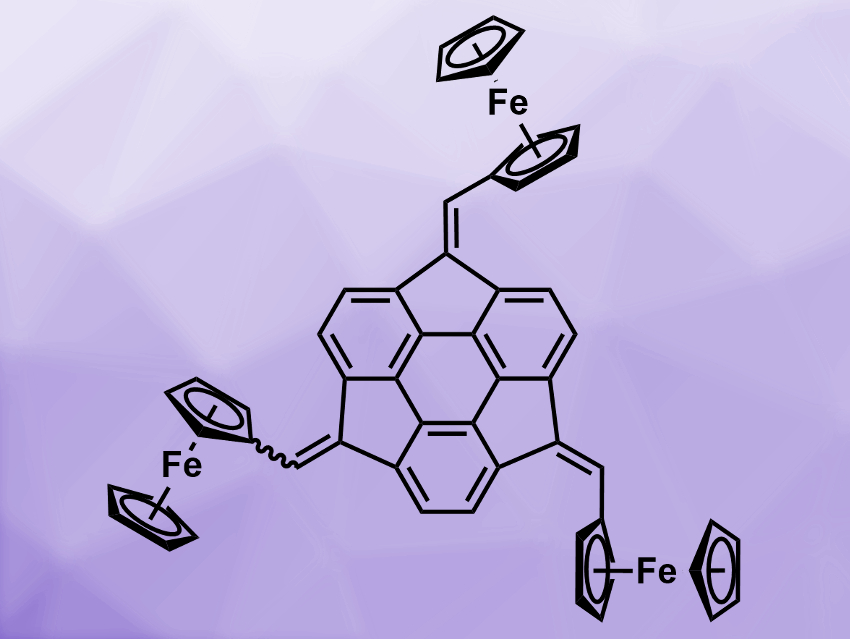Ferrocene is a sandwich complex that can be used, for example, in redox sensors. The redox properties of ferrocene can be tuned, e.g., by adding an aryl substituent or by including several ferrocene units in one compound. Sumanene is a fullerene fragment with a curved structure that forms a so-called “buckybowl”. It can be used to design functional organic molecules.
Artur Kasprzak, Warsaw University of Technology, Poland, and colleagues have synthesized tris(ferrocenylmethidene)sumanene (pictured) and used it to build the first buckybowl-based sensor, i.e., a reusable analytical device for the recognition of Cs+ in water. Tris(ferrocenylmethidene)sumanene was synthesized from sumanene and ferrocenecarboxaldehyde in a yield of 88 %. The compound is soluble in many organic solvents and stable both in solution and in the solid state. It is fluorescent with a red-light emission and a high fluorescence quantum yield.
The team prepared a Cs+ sensor by drying a solution of tris(ferrocenylmethidene)sumanene, tetrabutylammonium hexafluorophosphate (TBAHFP) as a supporting electrolyte, and Nafion® polymer on the surface of a glassy carbon electrode. This electrode can then be used for the selective detection of Cs+ in aqueous solutions; the current signal changes with the concentration of Cs+. The team attributes this effect to the formation of a sandwich complex, in which the Cs+ ion is bound between two tris(ferrocenylmethidene)sumanene bowls. This pulls the bound ferrocenes closer together and facilitates electron transfer. The sensor can easily be regenerated using water and then reused.
- Tris(ferrocenylmethidene)sumanene: synthesis, photophysical properties and applications for efficient caesium cation recognition in water,
Artur Kasprzak, Agata Kowalczyk, Agata Jagielska, Barbara Wagner, Anna M. Nowicka, Hidehiro Sakurai,
Dalton Trans. 2020.
https://doi.org/10.1039/d0dt01506g




